Many times in football the performance of the players depends closely on the player management and the connection with the coach. There are many examples of bad player-manager relationships and Henkrikh Mkhitaryan is one of them.
Being unable to build a connection with both Jose Mourinho and Unai Emery and failing to meet their expectations, pushed his career to the edge where he fell into the trap of losing his passion for football.
Luckily for him, what looked as another forced move away from a club that doesn’t want him, turned into a story of rebirth and falling back in love with the game.
His arrival at Roma under Paulo Fonseca wasn’t only a fresh start for him, but also a huge boost for the team where he currently has scored nine goals and assisted eight more in 21 Serie A games.
Not only he is the leading goal contributor of the team but he became a crucial part of Fonseca’s strategy.
In this scout report, we will use tactical analysis to explain why Mkhitaryan is so important in Roma’s current set-up and how he contributes to their title hopes.
Roma’s style of play and his role under Fonseca
As per the Armenian’s words, freedom is what he was missing the most after his spells with Manchester United and Arsenal. He admitted that he found it under Fonseca and that’s what unlocked his creativity and flair.
The Portuguese has a clear attacking approach that allowed Mkhitaryan to focus more on his strengths in attack rather than being forced into constant defensive contribution. The 31-year-old flourished in is favoured attacking-midfield position fitting the manager’s 3-4-2-1/3-4-3 formation perfectly.
The team rely on different ball-progression strategies depending on the opposition and the press intensity. They don’t always rely on the same players for their build-up from the back and use movement and player rotations there. Depending on their tactics of the day they would either push higher and employ a highly positioned defence, trying to control the ball closer to the opposition half, or will stay deeper trying to bypass the opposition press with rotations.
They focus on a lot of movement on and off the ball in the opposition half and rely on smart positioning and strong decision-making for creating as many chances in front of the goal as possible.
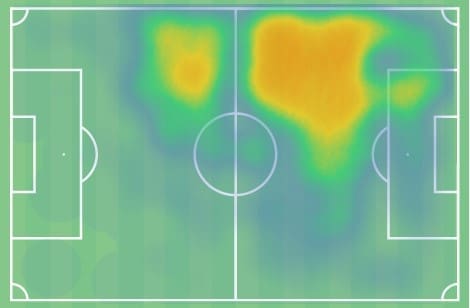
That’s why Mkhitaryan had more freedom and support to contribute to the attacking actions using his positioning, control and decision-making. He could be seen in both the centre attacking-midfield or in the wide areas, supporting his teammates with simple passes, through balls, crosses and even by simply creating space for them by dragging players out of position. His spatial awareness helps him in exploiting gaps and taking advantage of the opposition’s mistakes.
But what is it specifically that makes him important to Roma’s tactics?
Spatial awareness and contribution to the ball progression
The Armenian is most efficient in a central attacking midfield role although he does contribute well to the wide areas too. His ability to exploit spaces has turned him into a key figure in Roma’s attack, where he built a strong relationship with his teammates, often creating combinations with Edin Džeko, Jordan Veretout and Pedro.
Providing an additional passing option from the central line to the edge and in the final third has affected their ball progression and their efficiency in front of the goal. His occupation of the half-spaces is important both when they attack through the central areas and through the flanks thanks to his spatial awareness and passing abilities. He could either successfully perform one-two combinations centrally in efforts to deliver the ball to a goalscoring position in the box or spread out to the wings where the wing-backs could support with crossing. This allows him to move to the box off the ball and provide an additional threat.
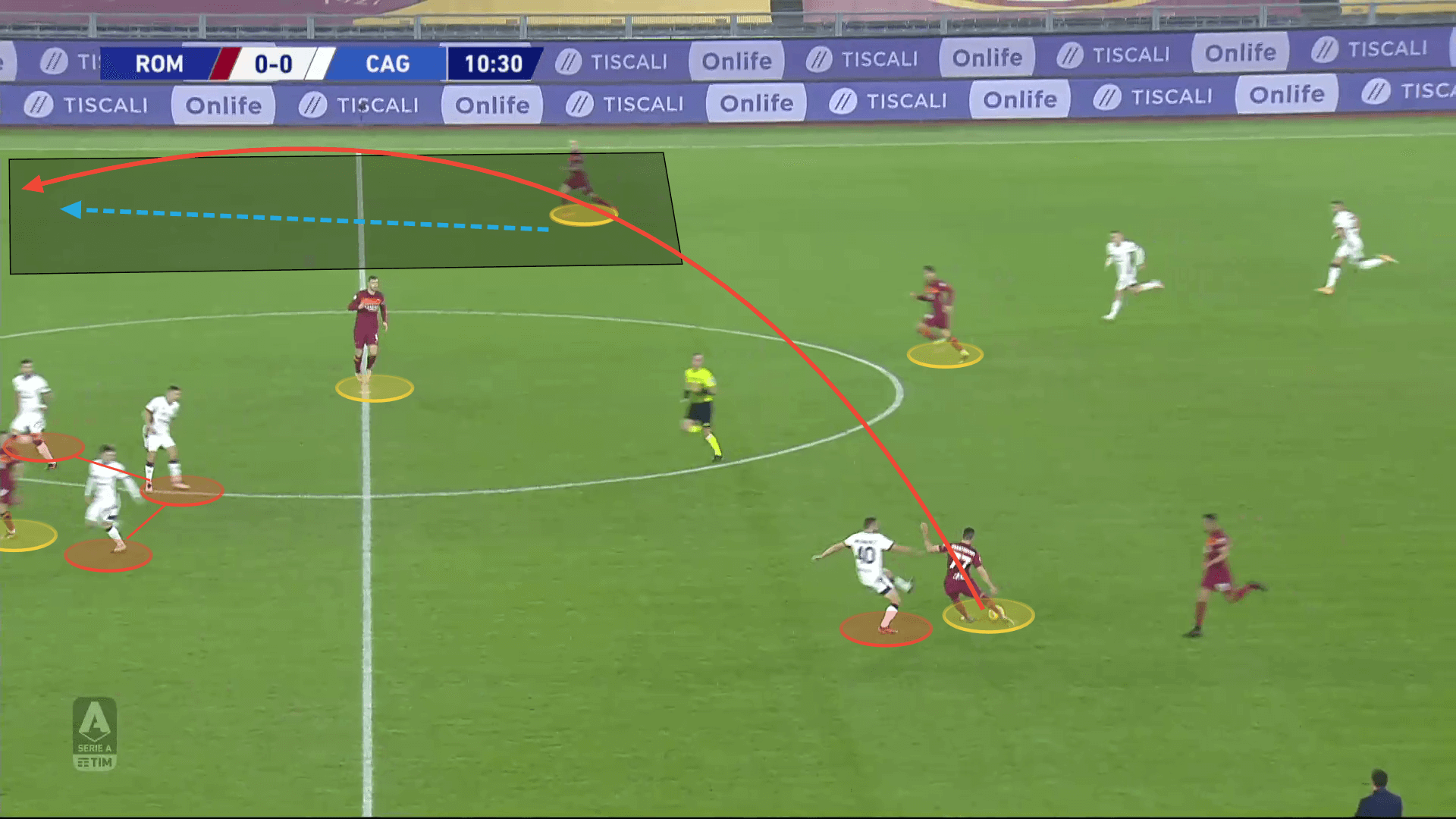
He is one of the reasons for Roma to be equally effective attacking through both wings and through the centre. His ability to hold on to the ball and to progress it despite the opposition’s pressing efforts allows his teammates to move off the ball to the advanced positions and often create numerical superiority in the final third. His 2.88 progressive runs on average per game result in him delivering the ball to key areas while offering freedom for the other players to exploit any gaps and expose the opposition.
He wouldn’t only be the one to spread the ball out to his teammates but more often he would move off the ball, exploiting spaces and acting as a passing outlet. His assistance in opening the passing lanes allows Roma a lot more flexibility in their attacking actions.
Half-space domination and counter-attacking contribution
His creative passing and his attacking flair are the reasons for his successful performance at Roma. He contributes well to the team’s attacking approach sending 2.14 through balls on average per game. This is a result of his smart movement and awareness of his teammates’ positioning as well as noticing the littlest gaps that occur.
The link-up-play both with the central midfielders and the forward players creates fluidity in attack and provides a lot of options in and around the box. His 3.23 passes to the penalty area on average confirm his contribution to the forward actions.
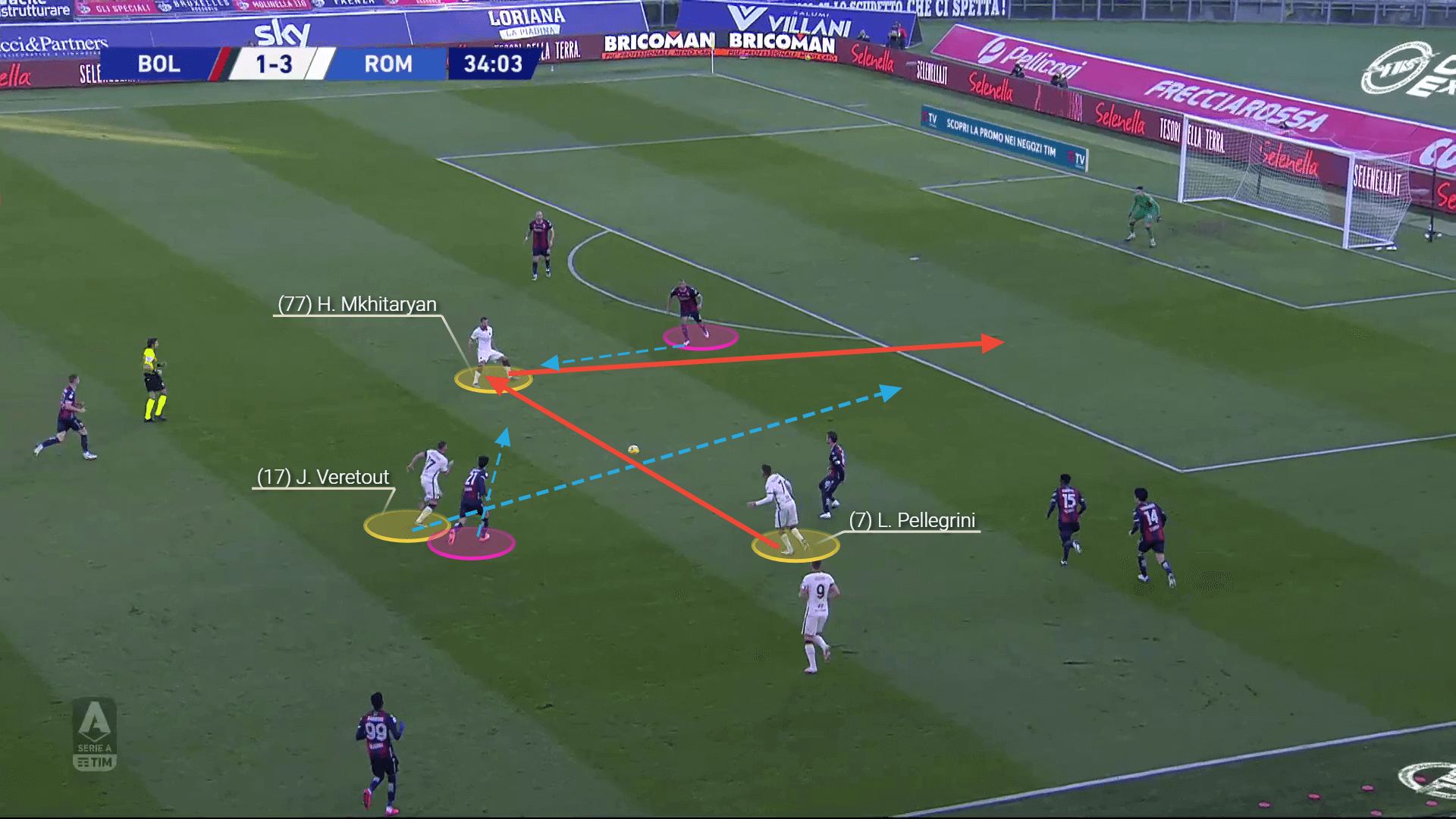
His movement is also key for Giallorossi’s counter-attacking actions. They rely on stealing the ball from the opposition and catching them off guard quite frequently. He contributes well both in starting these counters and in providing an option for finishing them. With 4.12 efforts on average per 90, Mkhitaryan always moves off the ball in aim to exploit the advanced areas and threaten the goal. If he is not up and running, he is usually involved in starting the counter-attacks and spreading out to his teammates.
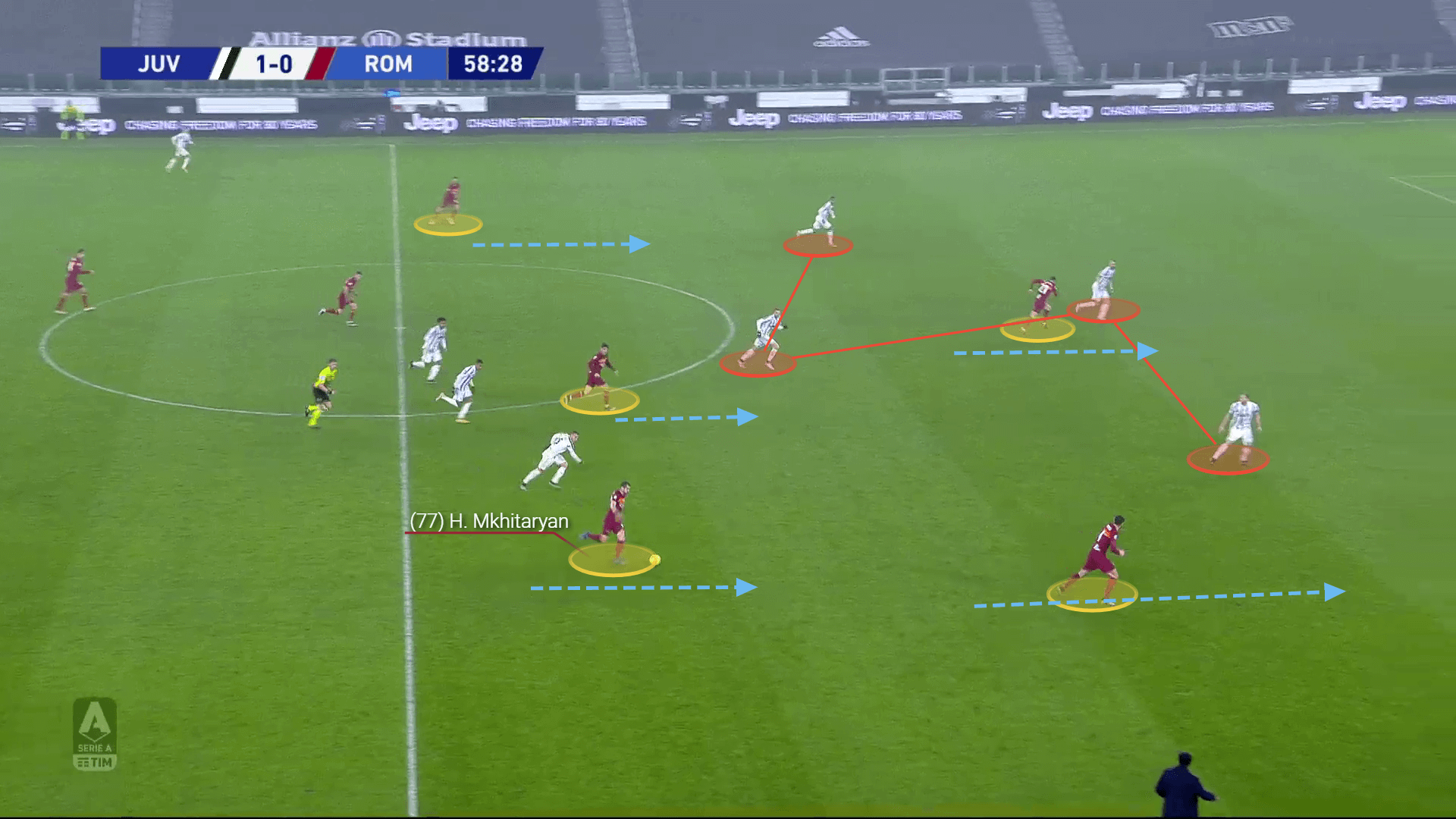
Being a direct threat and providing width
Even more impressive is his decision-making, which helps Roma take advantage of their opportunities in front of the goal. His doesn’t hesitate to occupy the box and provide direct threat too, instead of only creating chances for his teammates.
His runs to the penalty area and strong decision-making under pressure actually resulted in him being the top goalscorer of the team so far. His ball control and positioning help him create goalscoring opportunities even in overloaded areas or by winning loose balls. His 4.33 touches in the box on average underline his complex role.
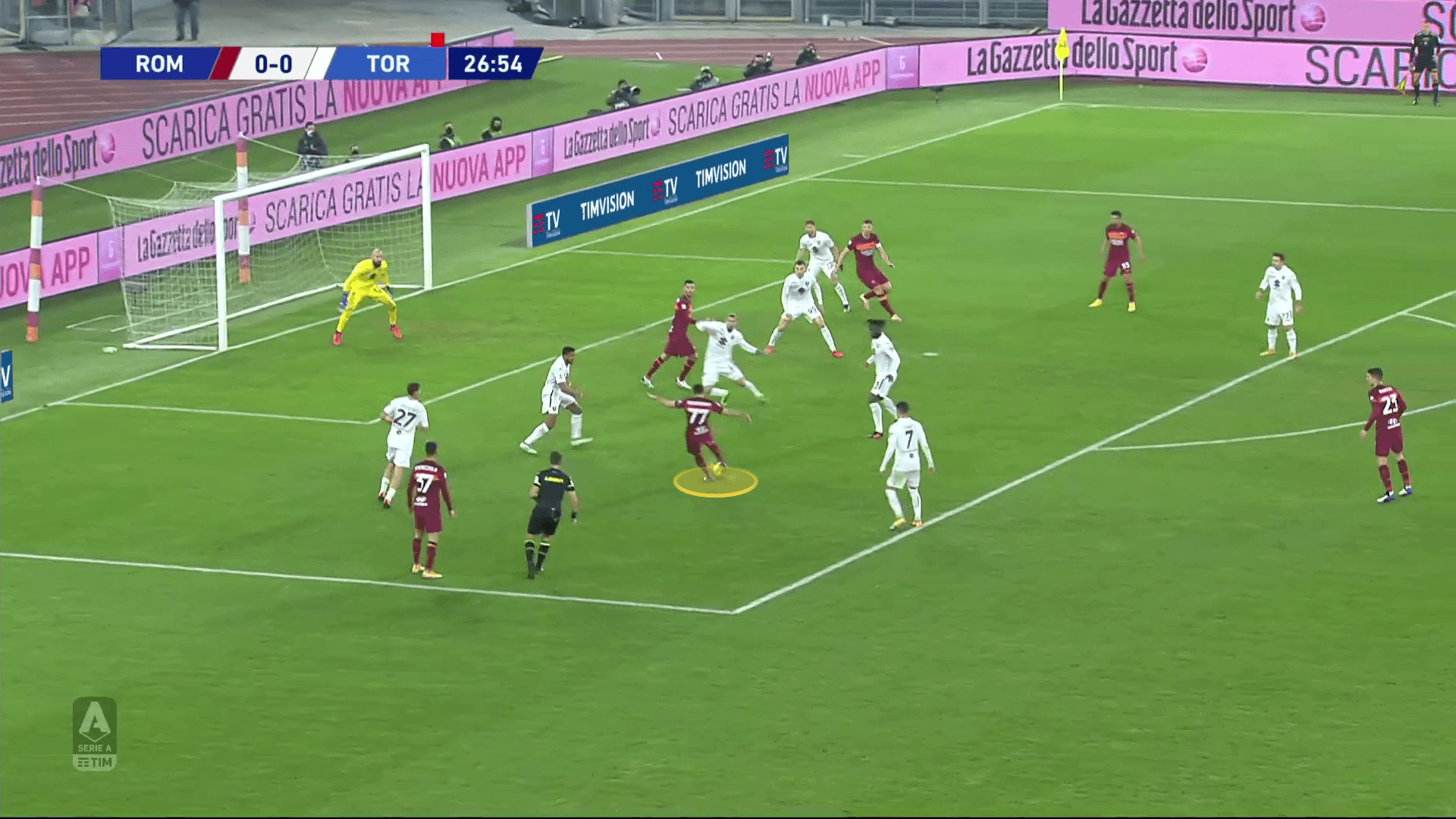
He combines well both with the central midfielders and the wide players resulting in interesting combinations and in exposing their opponents. Shooting from distance though is where his decision-making is the most evident. He has a flair of not overcomplicating things and taking on an opportunity instead of risking to lose the ball. That’s what leads to his quite frequent shots from outside the box, who rather often turn into stunning goals.
Apart from his 2.58 shots per 90, Mkhitaryan also tries to support his team from the wide areas. He would often move towards the flank to offer a passing option in ball progression or do rotations with his teammates. Although it’s not his best asset, he would occasionally contribute with crosses, allowing his teammates to occupy the key areas.
What makes his contribution in these areas is his dribbling and ability to take on his opponents. He supports the team by holding on to the ball and dragging defenders while freeing up spaces for his teammates centrally.
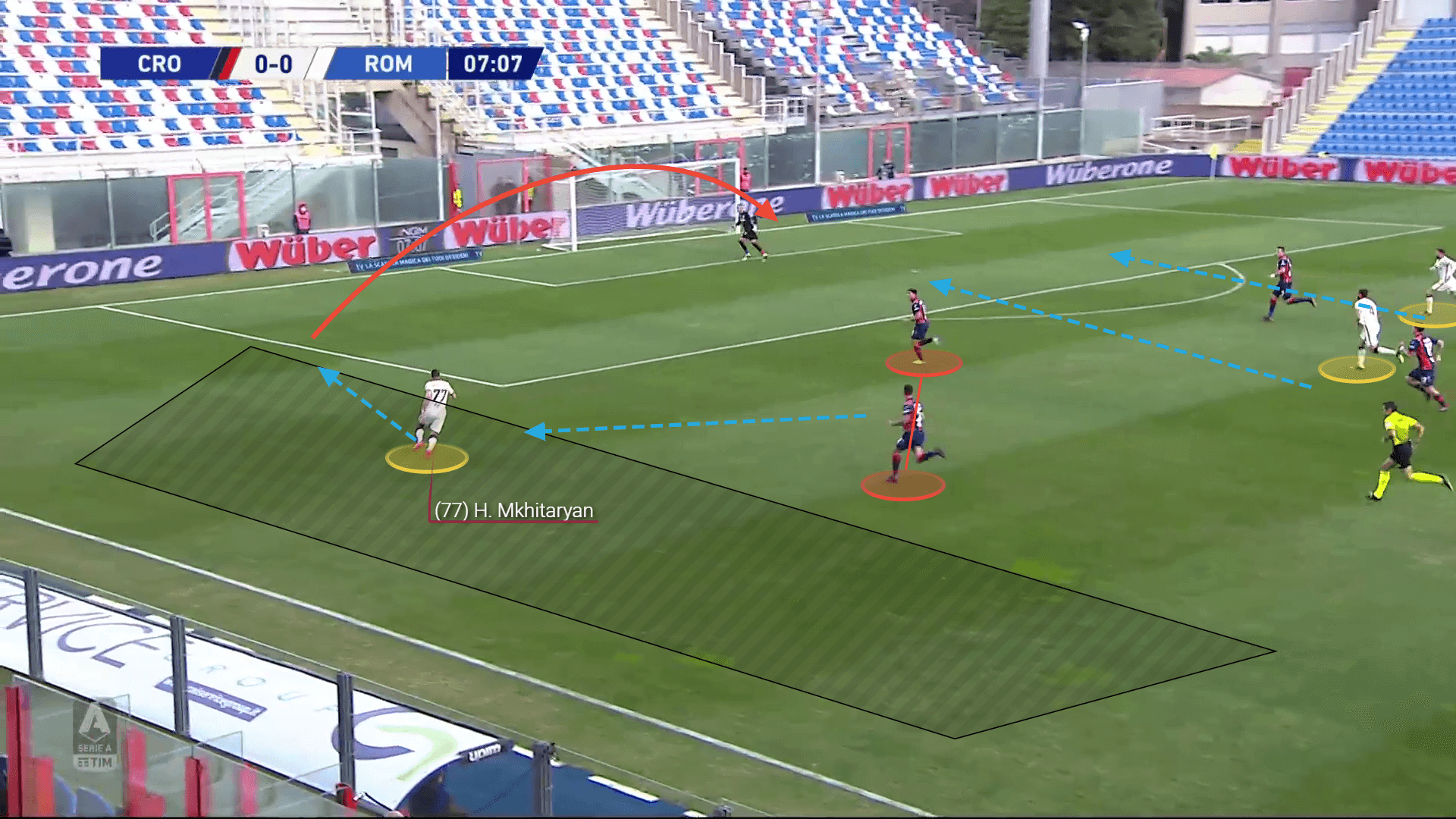
Conclusion
Mkhitaryan is currently one of the most efficient attacking players in Serie A, being positioned right next to the likes of Cristiano Ronaldo, Romelu Lukaku, Ciro Immobile and Zlatan Ibrahimovic. That’s not a coincidence. His contribution to Roma’s performance has been immense and is one of the main reasons for their top three fight.
As our analysis shows, he took the league by a storm with flair, creativity and control and made Roma believe that they could conquer the top.

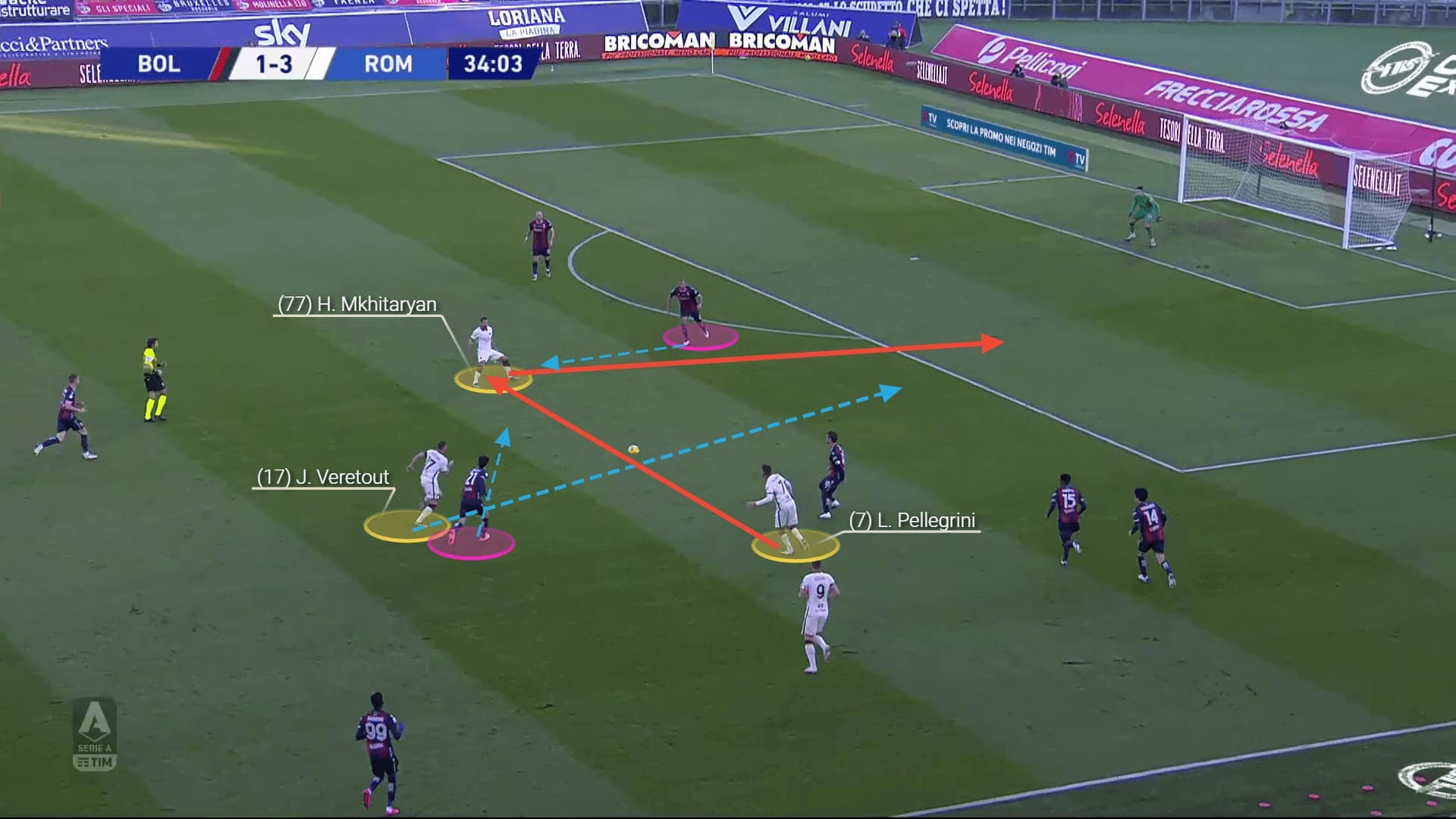




Comments